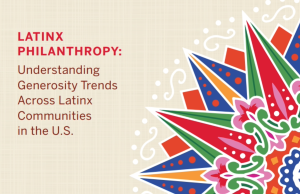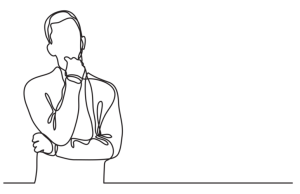You know that philanthropy is changing — fast — and today’s donors and volunteers are much more diverse. You can keep fundraising by approaching primarily one type of donor. Those types of practices work well and billions of dollars are raised.
But, you know in your heart that you are missing so much more from women and people of color who also care about your mission’s impact on the world. You also know that demographics are shifting and you already see that keeping on with current practices will be a short-term solution. It is not sustainable for future fundraising since women and other historically underrepresented groups will soon be the majority.
You can adapt how you fundraise and you must. Would you have designed plans in January 2020 to cultivate donors in a virtual world or designed compelling virtual events? That would have been fantasy. However, thousands of fundraisers quickly adapted this past spring.
The world is also changing swiftly regarding inclusion and the need to value and practice respect for the wide range of human differences, identities, and backgrounds. More fundraising leaders are embracing inclusion and want to train their teams on diversity, equity and inclusion (DEI). This begs a few questions:
- Are you adapting by applying a DEI lens to your advancement practices?
- Are you committing to new approaches in your fundraising to resonate with historically underrepresented donors?
For example, you could apply a gender lens to your work. Women are 50.8 percent of the population in the United States, and yet they continue to be historically underrepresented in fundraising portfolios. Many organizations still are not intentionally and successfully including women in their fundraising.
However, some leaders are tying an inclusive lens to advancement practices to successfully connect with historically underrepresented groups. For example:
- In its founding year, the women’s giving society (one-year gift of $100,000 to the Alumni/Parents Fund) at Williams College in Williamstown, Mass., led the school to a record-breaking annual giving total. Despite stepping back from most active solicitations in mid-March, when the college shut down due to the pandemic, Williams continued virtual conversations around their women’s initiative. Through these conversations, they learned that when times are tough, women show up and dig in to create change and provide aid. Williams women certainly reacted. They showed up with clear intention to support the college and increase their impact. Collectively, the 35 founding members (which surpassed a participation goal of 20) gave $3.9 million to annual giving in fiscal year 2020. This display of generosity and confidence in the institution boosted Williams to a record year for annual, unrestricted gifts – surpassing the goal by almost $1.5 million.
- Leaders at The College of William & Mary in Williamsburg, Va., committed to deeper engagement with identity-based communities including LatinX, LGBTQ+, Black and African descent, and Asian Pacific Islander. They have created an office with four full-time staff members who are focused on this effort and have initiated leadership circles comprised of 25 volunteer leaders for each identity and a “super circle” with representatives from all four identities that explores intersectional opportunities. These circles have continued to meet virtually. William & Mary also focused its annual day of giving on DEI initiatives and raised more than $1.2 million in one day just for those initiatives, which represented half of the giving on that day.
These stories demonstrate the potential of adapting successfully to cultivate donors in a virtual world while also adapting overall fundraising to be more inclusive with all historically underrepresented donors.
Swift adaptation to a virtual world of cultivation occurred because the goals and anticipated revenue coming from established practices were already in annual plans. The leaders and teams had already made a commitment. There was pressure to adapt — organizations were relying on the budgeted income. In addition, the cultivation practices were already deeply ingrained in fundraisers. They’ve been successfully used year after year. It is easier to adapt a practice one already knows very well than to create new practices.
You are what you practice. This means you choose behaviors and build skills to achieve a goal to which you commit and then practice them over and over. Think about learning to drive or play an instrument. When you are committed and intentional, at some point you can effortlessly, almost unconsciously, gain the same results you seek regularly without thinking about your behaviors. This is why you are so successful at fundraising, year after year. Just imagine trying re-create the wheel for every annual fund campaign, event or major giving recognition protocol.
It is admittedly hard to move beyond practices that are deeply ingrained. Current skills are well rewarded. (We hit our annual goal! We are on target with our campaign!) So, WHY learn new skills? Fresh skills are required when there are new opportunities and additional results to which you choose to commit. The philanthropic sector’s growing commitment to inclusion and the changing demographics means that you need to develop new skills.
Cutting through embodied practices and a reward system tied to past practices takes commitment from leaders. A new commitment means change. That is not easy when so much is changing around us daily. Under pressure — and leaders are under great pressure today — it is hard to commit to change. And yet, this is the very moment to be open to change.
Our nation’s trifecta of health, economic and social crises requires philanthropic leaders to keep what is working, adapt when needed, and choose new commitments to meet what our communities and society calls for. Across the country, inclusion is not just being called for but is demanded.
As you begin or expand your fundraising to be inclusive, recognize you are on a road to transformation. You will keep current practices that resonate for some donors and discover other approaches that are more appropriate for women and historically underrepresented groups. You might have early success as you start down this road, as the two stories above demonstrate. And you will keep learning and adapting with intention. As you practice over and over these new skills and approaches, as well as teach them to others, you will find that you and your team have transformed. You will have become the team that successfully connects with all donors, in ways that they prefer. You will have ingrained “better practices” for inclusion across all your fundraising, and it is now simply what you do, effectively, year after year. All donors who care about your mission will feel heard and valued.
As you begin this intentional journey of inclusion, rest assured that you can grow your pipeline, your dollars and loyal partnerships with donors from historically underrepresented groups. It won’t take more time or effort. It will simply be different — different practices, conversations and convenings. This is do-able. You’ve already proven your ability to adapt this year.
*****
Kathleen Loehr is senior consultant at Aspen Leadership Group. Her email is [email protected]










